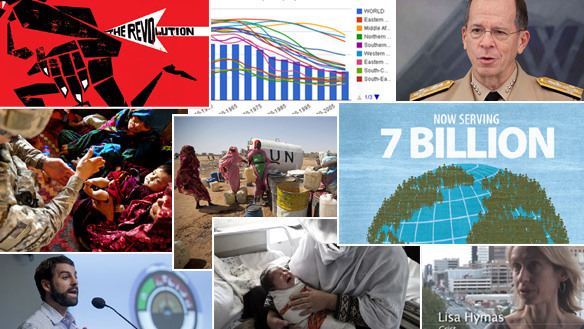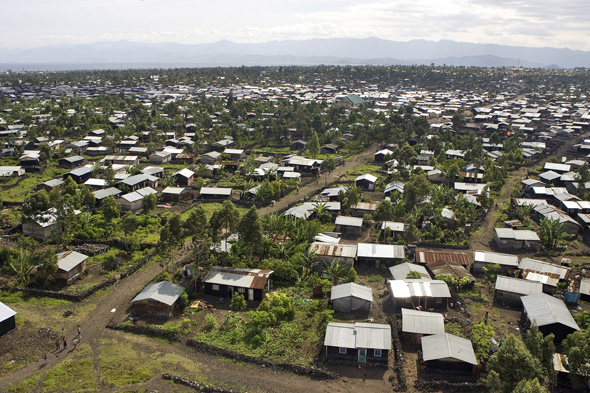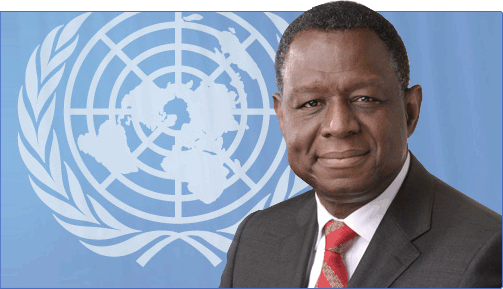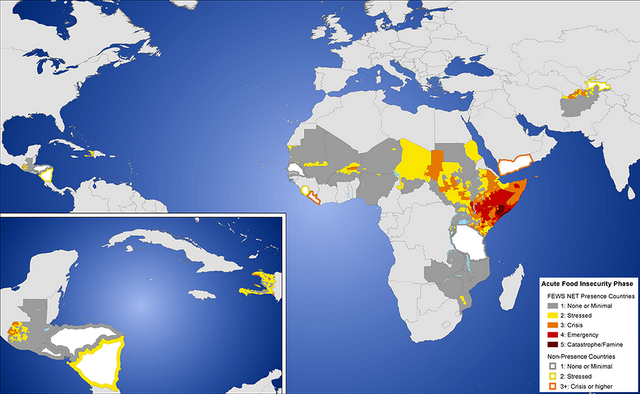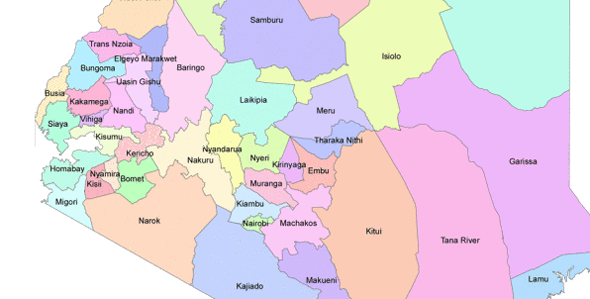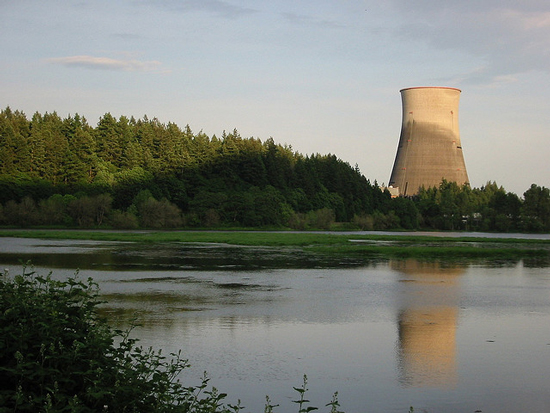Showing posts from category On the Beat.
-
Good Company: ‘New Security Beat’ Honored for Best Population Commentary
›The Population Institute’s 2011 Global Media Awards go to a Pulitzer Prize winning cartoonist, the head of the UN Population Fund, PBS NewsHour – and us! We’re thrilled to announce that the New Security Beat has won its third Global Media Award for Best Online Commentary or Blog.
Our company in this year’s line-up is impressive:- PBS NewsHour, for several segments related to population issues, including one on an Indonesian plant showing promise for male birth control and another on how religion and tradition are clashing with family planning efforts in Guatemala;
- Dr. Babatunde Osotimehin, Executive Director of UNFPA, for his editorial in Science, “Population and Development;”
- EarthSky: A Clear Voice for Science, for their series of weekly interviews with scientists around the world, including a series with population experts.
- Population Action International (PAI), for their short film Weathering Change, which tells stories about the impact of climate change on women from Ethiopia, Nepal, and Peru (and which was launched at the Wilson Center).
New Security Beat also got a nice shout-out from Andy Revkin on Dot Earth this week for our “seven billion” stories and coverage from South by Southwest Eco. For more on “seven billion” be sure to read Elizabeth Leahy Madsen’s breakdown of how we got to this milestone, Geoff Dabelko’s take on seven ways seven billion will affect the planet, the webcast of our recent reporting on population and environment event, and our latest YouTube videos, including PAI’s Roger-Mark De Souza presenting at South by Southwest Eco. -
Robert Draper, National Geographic
People and Wildlife Compete in East Africa’s Albertine Rift
›The original version of this article, by Robert Draper, appeared on National Geographic.
The mwami remembers when he was a king of sorts. His judgment was sovereign, his power unassailable. Since 1954 he, like his father and grandfather before him, has been the head of the Bashali chiefdom in the Masisi District, an undulating pastoral region in eastern Democratic Republic of the Congo (DRC). Though his name is Sylvestre Bashali Mokoto, the other chiefs address him as simply doyen – seniormost. For much of his adult life, the mwami received newcomers to his district. They brought him livestock or other gifts. He in turn parceled out land as he saw fit.
Today the chief sits on a dirty couch in a squalid hovel in Goma, a Congolese city several hours south of Masisi. His domain is now the epicenter of a humanitarian crisis that has lasted for more than a decade yet has largely eluded the world’s attention. Eastern Congo has been overtaken by thousands of Tutsi and Hutu and Hunde fighting over what they claim is their lawful property, by militias aiming to acquire land by force, by cattlemen searching for less cluttered pastures, by hordes of refugees from all over this fertile and dangerously overpopulated region of East Africa seeking somewhere, anywhere, to eke out a living. Some years ago a member of a rebel army seized the mwami’s 200-acre estate, forcing him, humiliated and fearing for his safety, to retreat to this shack in Goma.
The city is a hornet’s nest. As recently as two decades ago Goma’s population was perhaps 50,000. Now it is at least 20 times that number. Armed males in uniform stalk its raggedy, unlit streets with no one to answer to. Streaming out of the outlying forests and into the city market is a 24/7 procession of people ferrying immense sacks of charcoal on bicycles or wooden, scooter-like chukudus. North of the city limits seethes Nyiragongo volcano, which last erupted in 2002, when its lava roared through town and wiped out Goma’s commercial district. At the city’s southern edge lies the silver cauldron of Lake Kivu – so choked with carbon dioxide and methane that some scientists predict a gas eruption in the lake could one day kill everyone in and around Goma.
The mwami, like so many far less privileged people, has run out of options. His stare is one of regal aloofness. Yet despite his cuff links and trimmed gray beard, he is not a chief here in Goma. He is only Sylvestre Mokoto, a man swept into the hornet’s nest, with no land left for him to parcel out. As his guest, a journalist from the West, I have brought no gifts, only demeaning questions. “Yes, of course my power has been affected greatly,” the mwami snaps at me. “When others back up their claims with guns, there is nothing I can do.”
Continue reading on National Geographic.
Photo Credit: “Aerial View of Goma,” courtesy of UN Photo/Marie Frechon. -
Lisa Hymas on Envisioning a Different Future With Family Planning in Ethiopia
› ECSP caught up with Lisa Hymas, senior editor at Grist, last week during the first South by Southwest (SXSW) Eco conference and she spoke about her recent visit to Ethiopia to see the country’s community health extension program in action. “Ethiopia has a big challenge around population,” Hymas said, “but the government is committed to bringing that down.”
ECSP caught up with Lisa Hymas, senior editor at Grist, last week during the first South by Southwest (SXSW) Eco conference and she spoke about her recent visit to Ethiopia to see the country’s community health extension program in action. “Ethiopia has a big challenge around population,” Hymas said, “but the government is committed to bringing that down.”
The government extension program places health-workers – young women, for the most part, who have received basic training – directly into each community, where they are able to give out immunizations, provide advice on nutrition, teach families how to properly hang bed nets to prevent mosquito-borne illnesses, and provide family planning services and advice.
Thanks to the program, these health workers and those in the communities they service can “envision very different lives for themselves than their mothers had,” Hymas explained. For instance, one woman recounted that her mother gave birth to 10 children, “and almost died giving birth to the last one, because there was no access to birth control, and there was no good access to health care.” In contrast, she is now able to have a career and to use family planning to delay and space her own childbearing.
For more on Ethiopia’s health extension program, see Schuyler Null’s report on visiting a village health clinic near the town of Fiche last spring. -
Babatunde Osotimehin Answers Seven Questions on Population
›PSI’s Impact magazine has an interview up with UNFPA Executive Director Babatunde Osotimehin asking him seven questions about population. It’s not likely this will be the last seven-something-themed story as we approach October and the expected seven billion mark for global population, but Karl Hofmann, president and CEO of PSI, asks some good questions, including on the prospect of harnessing the “demographic dividend” and about the barriers facing more integrated development efforts – a critical topic in population, health, and environment (PHE) circles.
On the demographic dividend:Karl Hofmann: Demography can be a key to progress with the right policy environment in place, but it can also be a burden when we don’t have the right framework in place to take advantage of growing populations. Some have described this as the demographic dividend – growing populations as a potent driver of economic growth and development. Give us your perspective on that.
And on integrated development:
Babatunde Osotimehin: I spoke at the 17th African Union Summit this year and one of my messages was that we have the opportunity right now to take advantage of the demographic dividend of young people. It’s important for African governments to understand that they have a youthful population. Most of Africa is under the age of 35. If 85 percent of the African population is under 35, the implication is that you have to have education, social services, housing, all of that, tailored to meet the needs of this population.
Beyond that, given what we’ve seen with the Arab spring uprising and others in many parts of the developing world, young people who are out of work want education and economic opportunities. We want to appeal to member states to provide skills appropriate to development and also ensure that we have continuing conversations with young people about their reproductive health and rights so they can make the choices that will ensure they plan for their families.KH: There are lots of conversations going on in global health circles these days around the synergy of integration. From your perspective, what are the barriers to this integration?
Read the full interview on Impact.
BO: I think it’s bipolar. Some countries are satisfied with vertical programs. Others are resistant to changing their system at the request of a donor. One argument for integration is that you can have the one-stop shop situation where one, two, three trained providers can deliver services at the same time. These include integration of HIV counseling, testing and treatment with family planning, with health education for non-communicable diseases, with immunization for children or with maternity services.
When you look at the components of an integrated system, it is very easy to sell. In terms of investment, it makes sense for the governments to build and put this together. The supervision becomes a lot easier, and the training of health workers would then capture all of the skill sets that would be required. Some countries, like India, Ethiopia and Nigeria have started this kind of integration.
Sources: PSI.
Image Credit: Adapted from UNFPA. -
Edward Carr, Open the Echo Chamber
Food Security and Conflict Done Badly…
›The original version of this article, by Edward Carr, appeared on Open the Echo Chamber.
Over at the Guardian, Damian Carrington has a blog post arguing that “Food is the ultimate security need.” He bases this argument on a map produced by risk analysts Maplecroft, which sounds quite rigorous:The Maplecroft index [represented on the map], reviewed last year by the World Food Programme, uses 12 types of data to derive a measure of food risk that is based on the UN FAO’s concept. That covers the availability, access and stability of food supplies, as well as the nutritional and health status of populations.
I’m going to leave aside the question of whether we can or should be linking food security to conflict – Marc Bellemare is covering this issue in his research and has a nice short post up that you should be reading. He also has a link to a longer technical paper where he interrogates this relationship…I am still wading through it, as it involves a somewhat frightening amount of math, but if you are statistically inclined, check it out.
Instead, I would like to quickly raise some questions about this index and the map that results. First, the construction of the index itself is opaque (I assume because it is seen as a proprietary product), so I have no idea what is actually in there. Given the character of the map, though, it looks like it was constructed from national-level data. If it was, it is not particularly useful – food insecurity is not only about the amount of food, but access to that food and entitlement to get access to the food, and these are things that tend to be determined locally. You cannot aggregate entitlement at the national level and get a meaningful understanding of food insecurity – and certainly not actionable information.
Continue reading on Open the Echo Chamber.
Image Credit: “Estimated food security conditions, 3rd Quarter 2011 (August-September 2011),” courtesy of the Famine Early Warning Systems Network (FEWS NET) and USAID. -
Deborah Mesce, Behind the Numbers
Kenya’s New Data Website Puts the Ball in Media’s Court
›The original version of this article, by Deborah Mesce, appeared on PRB’s Behind the Numbers blog.
The Kenya government took a bold step toward transparency a few weeks ago when it fired up its Open Data website and posted loads of data in a format that makes the information easily understood by the average person. The data sets include national census statistics as well as government spending, and the government promises more data to come. This is a boon for journalists willing to wade into the numbers to examine what’s going on in their country and hold their government accountable. I’m waiting now to see how they will use this new tool.
We always hear that information is power, but that works only if the information is used. Lots of information begins as numbers, statistics, and data sets, with lots of good stories tucked away in there to be found by the journalist willing to go the extra mile, examine the numbers, and do the math. In many developing countries, the information – numbers, statistics, data sets – isn’t easily accessible, if it is available at all. Governments keep a tight hold on it, or if it’s made available, the average person would be hard pressed to make heads or tails out of it.
Continue reading on Behind the Numbers.
Image Credit: Open Data. -
Farahnaz Zahidi Moazzam on the Population Reference Bureau’s “Women’s Edition” Trip to Ethiopia
›The original version of this article, by Farahnaz Zahidi Moazzam, appeared on the Population Reference Bureau’s Behind the Numbers blog.
My name is Farahnaz Zahidi Moazzam, and I’m a freelance journalist, writer, and editor from Pakistan. My passion is writing about human rights with a special focus on gender issues and reproductive health. Blogging is a personal joy to me, as I put my heart into my writing and blogging allows for a more personalized style. Digital journalism is a sign of evolution – one I happily accept. My pet peeve is marginalization on any grounds. I am a mother of a teenage daughter and live in Karachi.
As part of the Population Reference Bureau’s (PRB) group of journalists in Women’s Edition 2010-2012, I recently had the chance to travel to Ethiopia on a visit that was unforgettable. The visit inspired a series of seven brief travel-blogs, based on my seven days there. Women’s Edition is a wonderful opportunity to connect with other like-minded female journalists from developing countries around the world, and learn solutions to the problems from this interaction. The program has reaffirmed my belief that our commonalities are more than the differences.
Read Farahnaz Zahidi Moazzam’s posts from her trip to Ethiopia on her blog, Impassioned Ramblings, and view photos from the trip on PRB’s Facebook page.
Photo Credit: PRB. -
What’s the Link Between Population and Nuclear Energy?
›The popular Big Green Purse blog, written by best-selling author Diane MacEachern, recently asked the Worldwatch Institute’s Robert Engelman, “What’s the Link between Population and Nuclear Energy?” The blog, which encourages women to use the “power of the purse” to improve the environment, wanted to know: “Why aren’t we talking about reducing population as part of our global strategy to minimize dependence on power sources [like nuclear energy] that pollute the environment and threaten people’s health?”
While “reducing population” is not possible, slowing population growth may be, if fertility rates continue to fall. As always, Engelman answered the tough question with thoughtful aplomb, offering three core values as a starting point:One: see the global environmental dilemma not as a problem to be solved but as a predicament to be responded to. We can’t control our future, but we can act with integrity as we aspire to build just societies in an environmentally-sound world. Addressing our numbers can become part of that.
But I’m wondering how the readers of Big Green Purse – which is replete with media-friendly lists like “Top Ten Eco-Tricks” – can translate population and its messy intersection of human rights, health care, and consumption levels into an individual purchasing decision.
Two, embrace human rights as a foundation for our actions. All people – even if too many or consuming too much – have dignity and a right to be here. As it happens, population policies based on the right of all women to choose whether and when to bear a child actually slow the growth of population. …
Three, acknowledge that no one can claim a greater right than anyone else to use energy and natural resources. This is called equity. We cannot object if the poorest people living today and yet to be born succeed in gaining the means to consume as much as Americans do.
As Engelman writes, “The idea that we can easily trim our individual consumption to come into balance with nature – worthy as that effort is – looks increasingly naïve. If people in the developed world slash their per capita greenhouse emissions by half, their effort could be counterbalanced by people in developing countries boosting theirs by just 11 percent.”
Photo Credit: “Trojan Nuclear Power Plant,” courtesy of flickr user tobo.


